How To Structure Your HR Department As Your Company Grows
Your company’s expanded over the past two years, and it’s fallen to you to fulfill the need for a dedicated HR role. If you feel like you’re underprepared for the role, you’re not alone.
Research from Gartner revealed that only 35% of HR leaders agree they have the mix of data, technology-based and social-creative skills needed to meet their functions’ requirements (full content available to clients).
This is especially true at small businesses where one employee may take on all of the organization’s human resource management needs, including payroll, recruiting, compliance, tracking vacation days, and benefits administration.
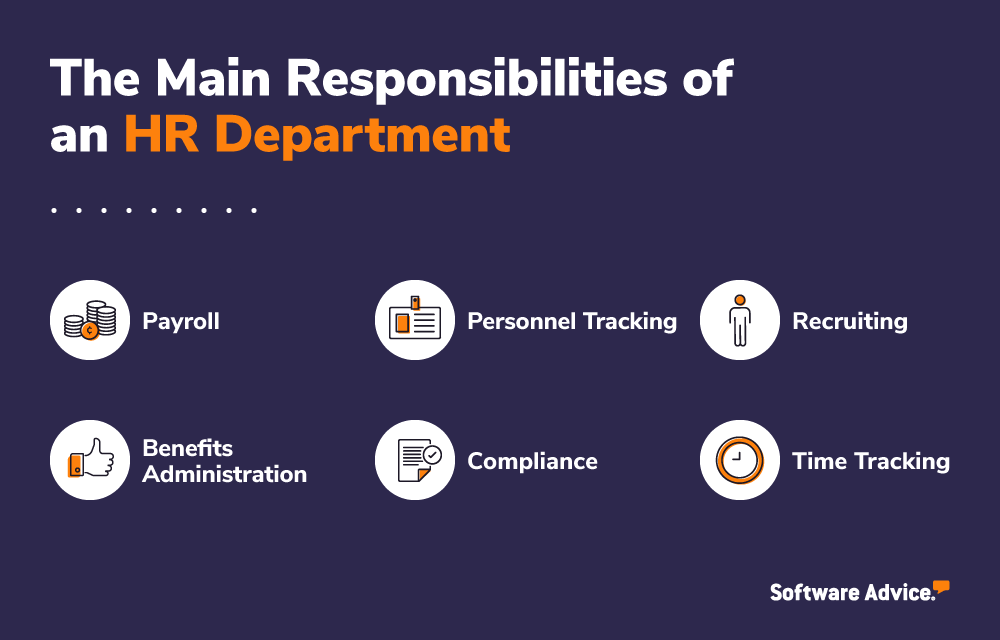
The main responsibilities of an “HR person”—and that includes you
But, your manager announces there’s available budget to hire another HR professional. Just like that, the sole “HR person” becomes the “HR department.” With the transition comes questions. How should you best structure this new HR department? How do you divide up the work? And what happens when a third, a fourth or even a fifth HR worker comes aboard?
We’re here to answer these questions, but first, let’s dispel a common HR department myth.
1:100 is an antiquated guideline
The question of how many internal HR employees you should have on staff used to follow a decades-long standard of one HR person for every 100 full-time employees.
But, research from the Academy to Innovate HR (AIHR) shows that this is insufficient and the correct number differs based on a variety of factors. Past studies have revealed that the average HR-to-employee ratio is 2.60, but smaller businesses still generally report higher HR staffing ratios.
The need for HR staff decreases as the employee size increases because large enterprises tend to have more HR staff than small businesses do. They may need to add HR employees only when the need arises, such as when:
Facing complicated compliance issues
Hitting an unexpected and lengthy growth period
Having one or multiple remote locations or branches
Lacking necessary processes and systems
This is often why small businesses operate without an HR team, as well. Plus, HR software systems automate tasks such as payroll runs and time tracking, while external agencies can handle outsourced needs like recruiting. Sometimes, small businesses may not need a dedicated HR employee until they have well over 200 employees.
However, a guideline isn’t always a hard and fast rule. Your HR hiring plans depend on the current state of your business. Below, we’ll show you how you can structure your HR department when your business starts to grow beyond the 100 mark.
Suggested HR hiring timeline based on number of employees
HR business needs vary by each organization. For example, a wise time to bring on your first HR employee is when you’re dealing with the Family Medical Leave Act (FMLA), the Affordable Care Act (ACA) or the CEO pay ratio reveal.
Peter Rosen, president of consulting firm HR Strategies & Solutions, offers a more modernized guideline to go by based on his experience:
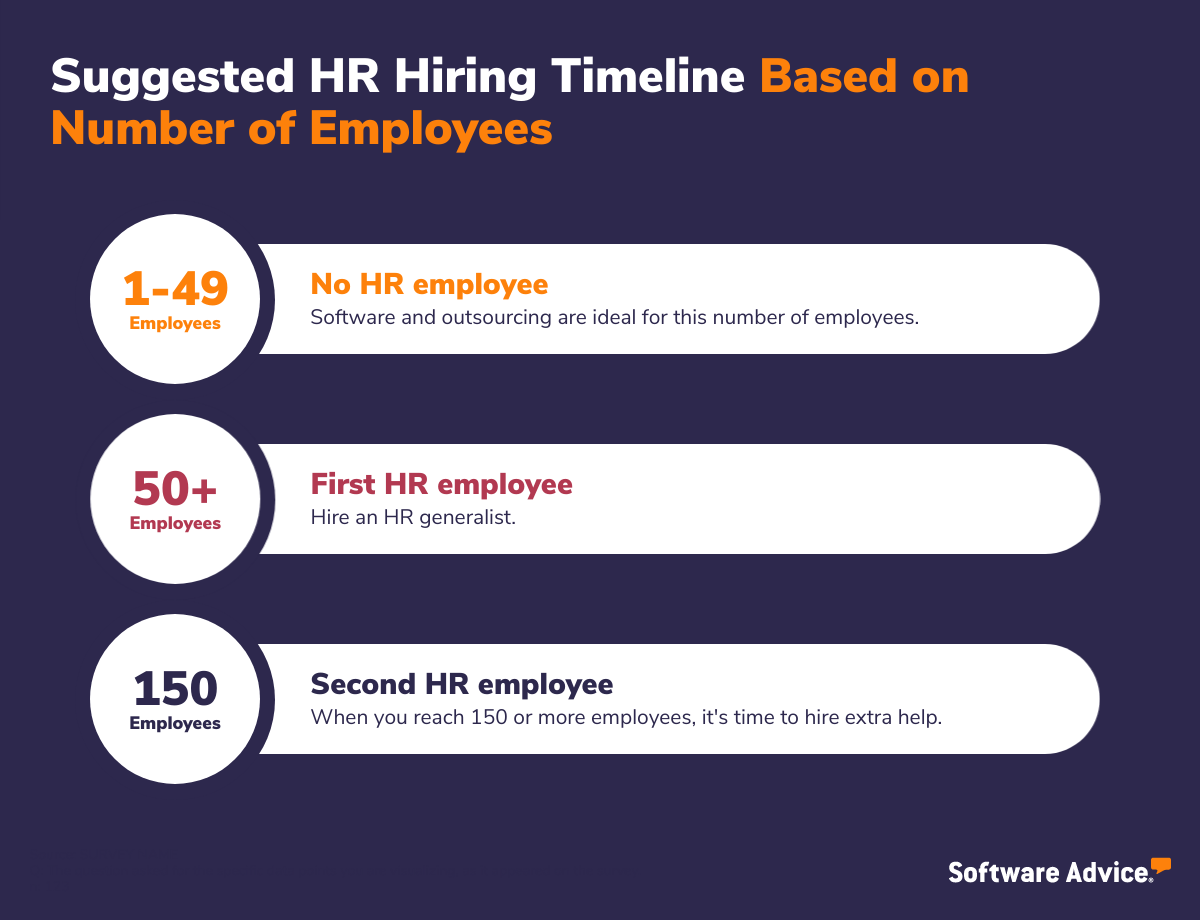
According to Mikaela Kiner, founder and CEO of consultancy Reverb, “If you’re growing, I would say bring in that second person at the 150 mark. That rate of growth demands a lot more infrastructure and process.”
How to optimize your structure in the beginning
If you’ve grown past 100 employees and your HR generalist/staff is finding it tough to balance everything on their own, it might be time to hire your second HR employee. This gives you generally two options to structure a burgeoning HR department.
Hire an HR assistant: In this scenario, you become the head of HR strategy, handling responsibilities like employee relations and performance management. The newly hired HR assistant handles administrative tasks like managing the HRIS, filing paperwork, and posting job ads.
Hire a full-time recruiter: This person will take charge of one of the most taxing HR functions: staffing. Peter Rosen recommends this structure to save tons of time by using a specialist for recruiting. After all, recruiting requires specialization to hire at a fast pace during the growth stages.
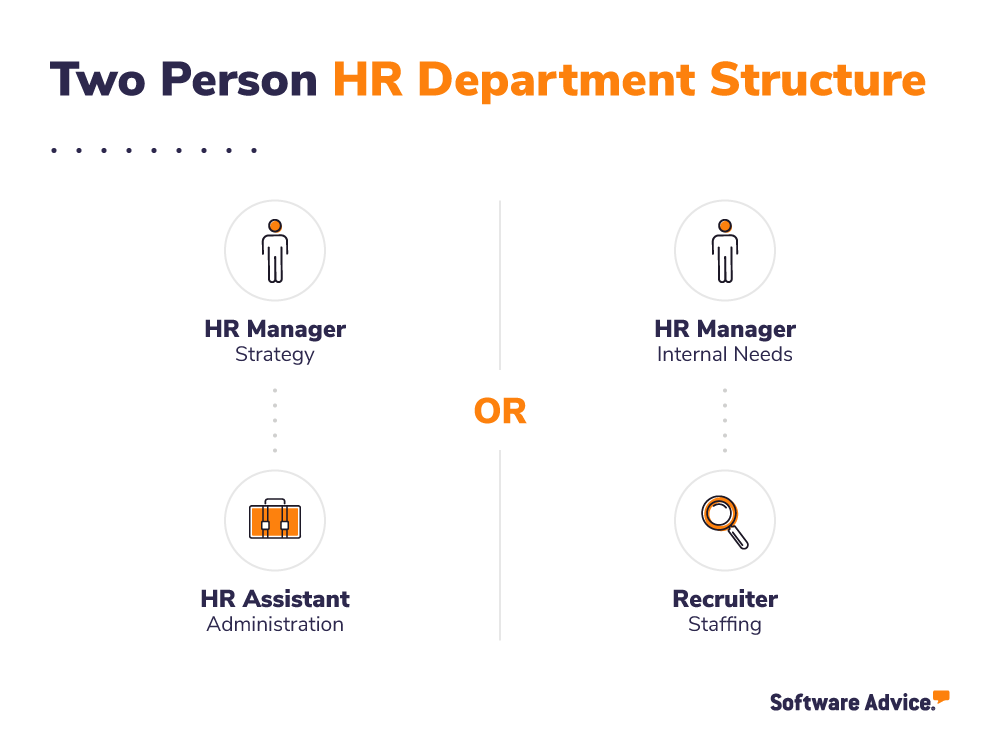
When room opens up for your third employee, hire an assistant or a recruiter, depending on your remaining need.
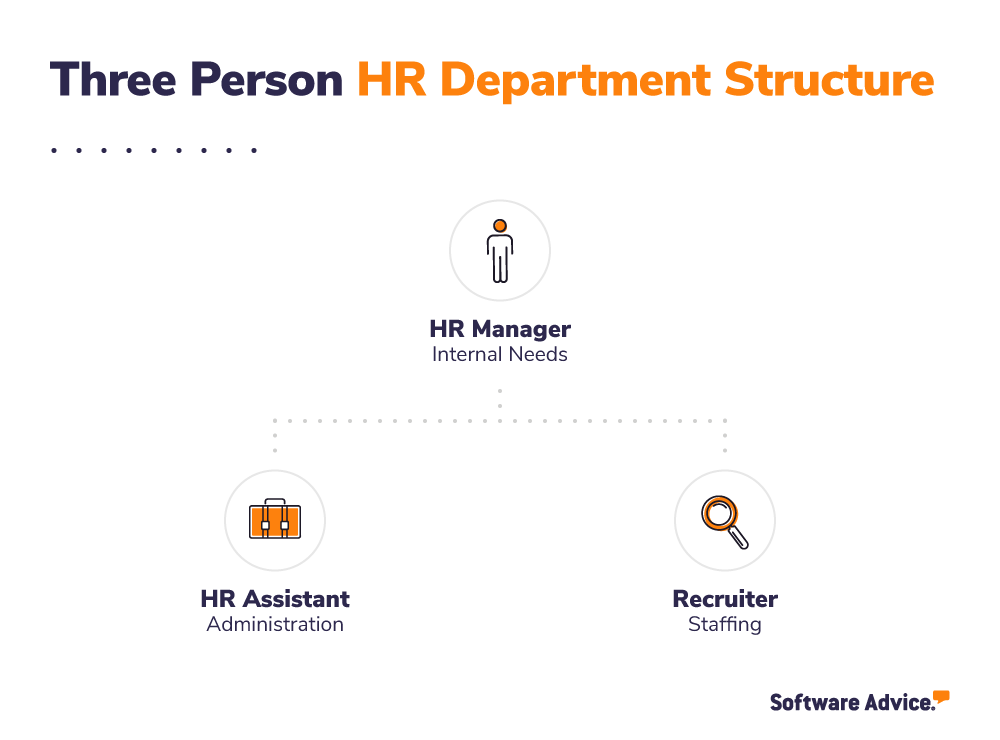
This HR department structure is recommended for most companies. Many organizations bring in company culture and leadership development experts when they reach 50 to 80 employees because these are vital focus areas. But you could outsource these needs too if they’re not on your list of priorities. Kiner agrees:
“You can outsource that and look for outside programs. But, if that’s something the company knows it wants to develop and provide to employees on an ongoing basis, I’d say over-resource. Make sure either the senior-most person or the second person you’re bringing on really has the skills and ability to do that work with the leadership team.”
Divide by function as you grow
As you grow your HR department, you should hire specialists to own specific HR functions such as benefits or employee relations, because these functions will become more complicated with size.
Check out the video below to learn more about the top responsibilities in performance management that your HR professionals should fulfill:
Rosen notes that in the case of, say, compensation, outsourcing can occasionally result in competitive salary structures and benefits packages. But Kiner stresses the importance of hiring experts early on—even for compensation.
Kiner explains, “Most generalists are not deep experts in [compensation]. A lot of times you have compensation and benefits people who are often good with [HR] systems, and you can put that all under one person.”
Once you have compensation covered, your needs will likely vary by industry. Here is an example of what a six person HR department might look like:
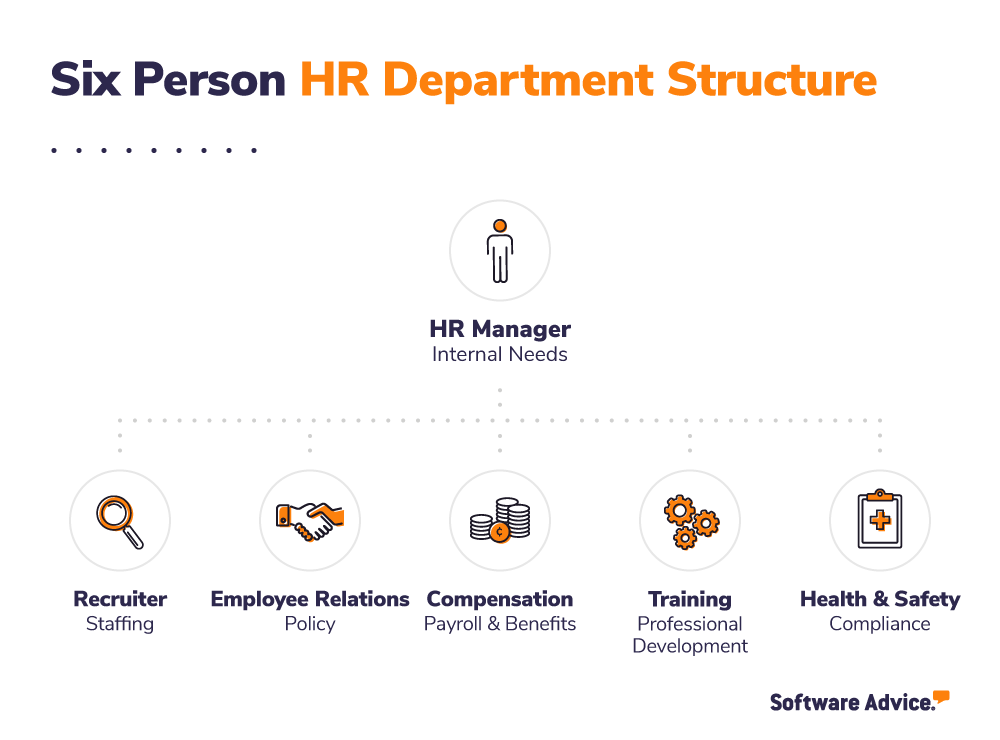
In this scenario, here’s how HR duties are divided up:
HR director: Handles the strategic vision of the human resource department and approves all high-level decisions while handling communications with C-suite.
Recruiting manager: Works with hiring managers to create job listings, parse through resumes, conduct interviews and extend offers while managing the applicant tracking system (ATS).
Employee relations manager: Handles onboarding needs, coordinates performance management efforts and manages employee disputes while recommending policy changes for approval.
Compensation manager: Develops competitive pay and compensation structures within predetermined budgets, manages core HR software systems and ensures error-free payroll runs and employee benefits administration.
Training manager: Works with department managers to develop effective training courses that enhance skills, creates materials and assessments and manages any learning management platforms.
Compliance manager: Ensures that the company is up-to-date with all health, employee and safety regulations, while managing necessary employee certifications.
This department format ensures that all core and strategic HR needs have an owner, and the flat HR structure allows the HR Director at the top to remain in-the-know on important projects and discussions.
Things to keep in mind as you grow
Underneath your five managers above, you may have many assistants and specialists. You could also have a co-HR director by your side, or decide to break up the workload by office location or country.
Here are a couple of final best practices to keep in mind as your HR department evolves:
Don’t shove square pegs in round roles. It’s tempting to take the people you have and retrofit them to your needs, but if someone isn’t a great fit for a new role, don’t force it.
Invest in software early. HR platforms can be used by even the tiniest start-ups, as there are numerous affordable options. These solutions help businesses automate necessary tasks like tracking clock-ins and running payroll—saving money on hiring costs and lightening the overall workload. Rosen recommends companies start looking at software solutions around the 35 employee mark.
If you want to know more about which HR platform would suit your organizational needs best, call our advisors today for a free consultation on (844) 675-2849. They’ll be able to help you narrow down your HR software search in less than 15 minutes.